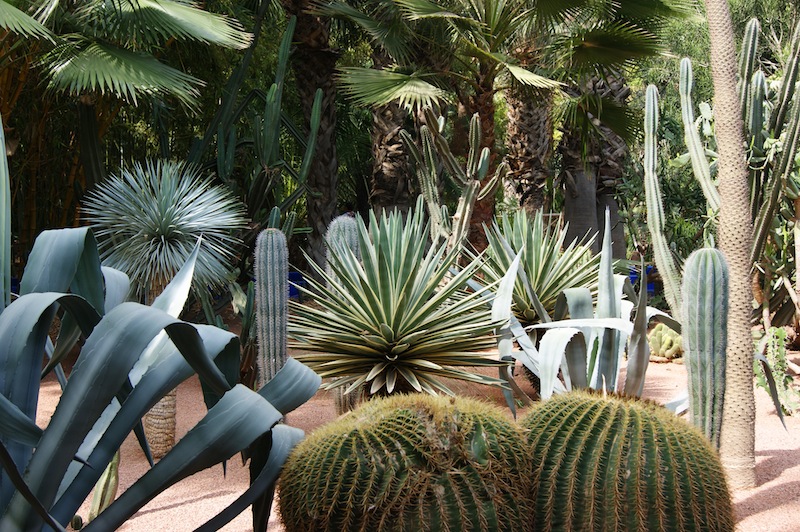Fashion designer Yves Saint Laurent had a home in Marrakech for many years and, with his partner, helped restore a famous city garden. Our visit to the Jardin Majorelle turned out to be a highlight of our holiday.
Located outside the old walls of the Medina, in the Ville Nouveau, we walked to the gardens one steamy morning through the dust and heat haze, past the Koutoubia Mosque and its dominating tower. Being a Friday, the grounds were busy with locals waiting to join prayers.
Unable to go inside as non-muslims, we carried on past the bus station with its attendant riot of humanity and vehicles in various states of disrepair. It looked like half the city was on the move, saying hello and goodbye to friends and family, and watched by tradesmen and their their bikes, the tools of their trade on show as they waited for a temporary employer. The bus fumes were as intense as the temperature.
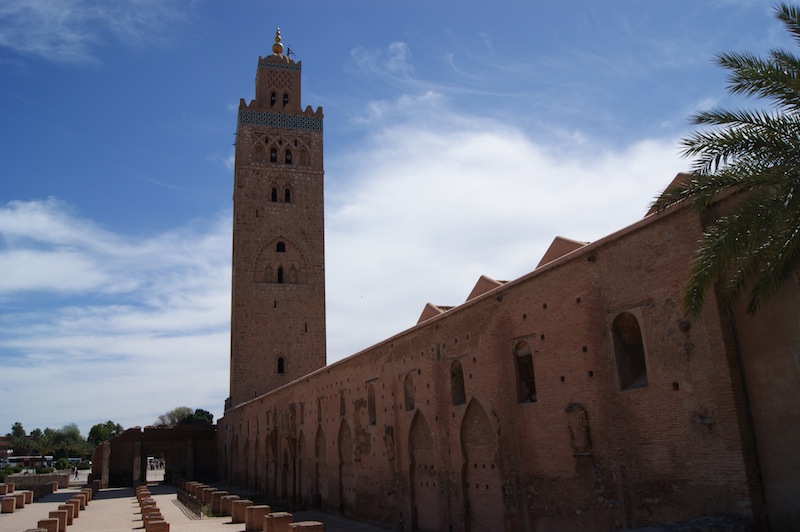
We found the gardens by the side of a busy main road, concealed behind a wall and overlooked by mansion blocks. When they were designed by the expatriate French artist Jacques Majorelle in the 1920s, the area was a lot quieter and less developed. We queued to get in and the wait was worth it.
Inside its walls, the heat was less intense and the sounds of the city were muffled by a forest of cacti, palms and bamboo of all shapes, sizes and varieties. The gardens were beautifully laid out, with colour provided by big splashes of yellow, white and pink bougainvillea. The buildings and water features, painted in an electric blue, added more spectacle.
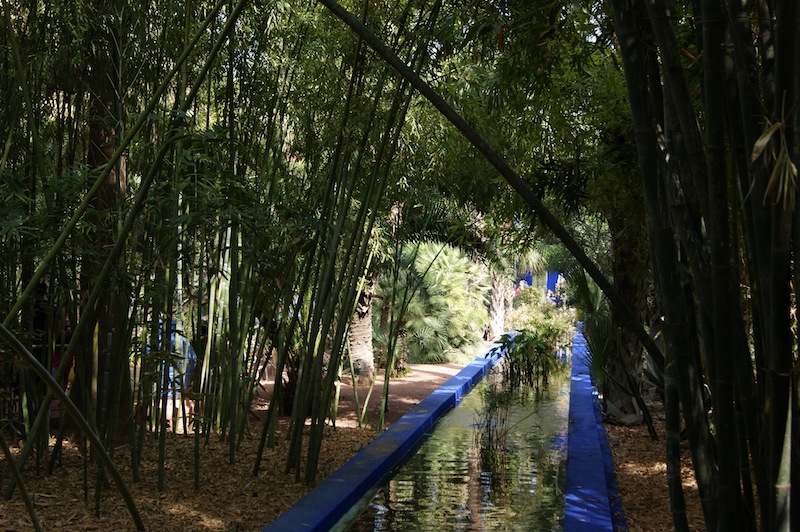
Even with the crowds it was absolutely delightful and a testament to the work of Yves Saint Laurent. When he arrived in Marrakech with his partner, Pierre Bergé, he found the gardens overgrown and neglected and they expended much time and money on giving them a new lease of life. No wonder the designer insisted that his ashes be scattered amid the plants after his death.
We visited the Berber Museum, which is housed in the main villa. The subject matter wasn’t of huge interest but it was all staged very professionally. Elsewhere we browsed the shop and had lunch in the courtyard cafe, relishing the peace and the colours.
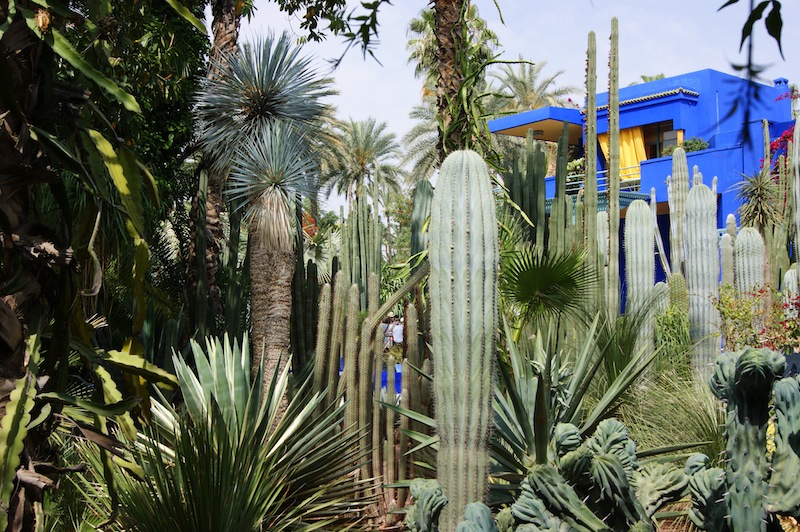
It was such a major departure from the chaos, dirt and noise of the city that it was difficult to tear ourselves away.
But we walked back through the medina in the intense heat, soaking up the atmosphere and stopping for a beer or two at Kosybar. Not long after we were back at the our road by the pool.
In the evening we went in search of an ATM and found ourselves back in the heaving bosom of Marrakech, the Djemaa el-Fna. Again, at sunset, it was an overwhelming mass of people milling around amid the henna artists, fruit sellers, entertainers and snake charmers. One of the latter spooked me with his cobra and I ran, colliding with a local and almost breaking his arm.
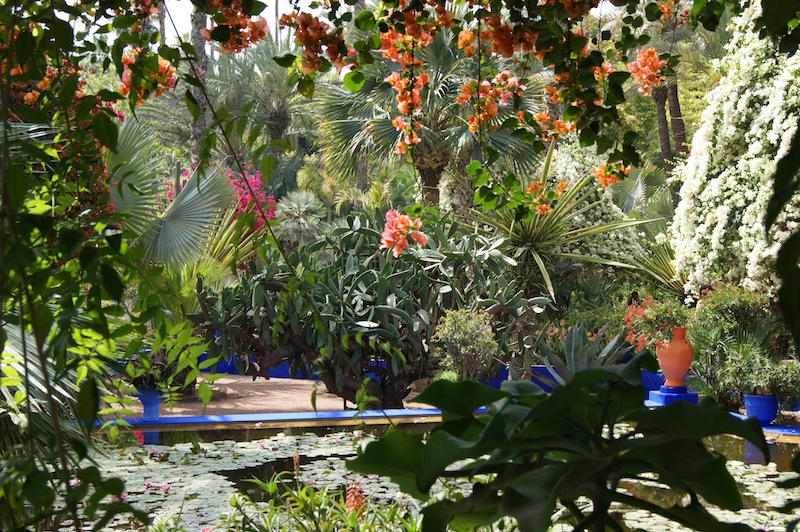
The food stalls were doing a roaring trade and I was tempted to eat at one but I could sense Graham’s nervousness so went for a Lonely Planet recommendation instead, the homely Riad Jama. Lit by candles and all rather homespun and basic, it was deep in the souqs and very quiet.
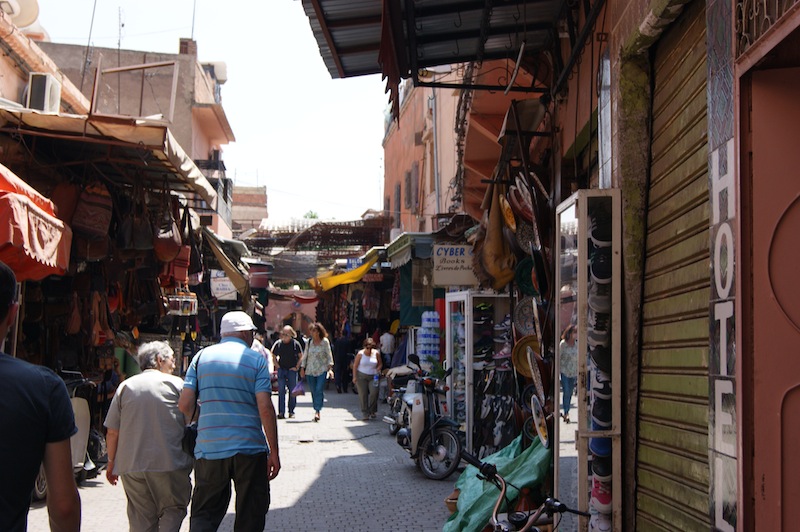
Ordering from a poorly photocopied menu, our stern young waiter advised us that our choice of starter wasn’t available in a manner that suggested that this failure was somehow our fault. Hoping that this was a language issue rather than sheer rudeness, I was mollified when he produced an illegal bottle of red wine for us to consume.
Our starter, a salad of tomatoes and red onion, was so salty that I feared my mouth would dissolve. Our mains – mine a lamb tajine – was hearty fare but again my cold-flattened taste buds rather scuppered my enjoyment. Graham insisted that he had enjoyed his beef.
We left for the inevitable Kosybar drinks.

